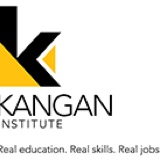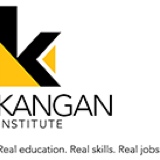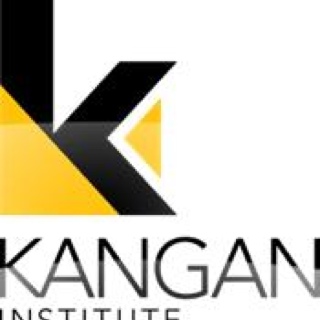Information
-
Document No.
-
Audit Title YYYY Sem ? COSTC
-
Client / Site Building and Campus
-
Conducted on
-
Prepared by
-
Location
-
Personnel
1. Layout
-
Area is clean, tidy and well kept.
-
Floor is free of obstructions and slip resistant.
-
Adequate storage areas provided.
2. Environment
-
There is adequate ventilation.
-
Is temperature is comfortable?
-
Is lighting is adequate?
-
Is the work area is free from odours?
3. Emergency Procedures
-
Emergency and hazard signage is clearly visible?
-
Written evacuation procedures and exits displayed?
-
Escape routes and emergency doors are clear?
-
Are spill kits available?
-
Portable fire extinguishers have been provided and maintained?
4. First Aid Facilities
-
There are appropriate first aid and emergency facilities in the near vicinity and workers' are aware of them.
-
Kits are clearly signed, stocked and contents are in-date.
-
Names and contacts of first aiders displayed and up to date.
5. General Facilities
-
Washing facilities are clean and functional.
-
Are stairs, passageways and store rooms well lit?
-
Warning and Safety signage in good condition.
-
Isolation valves are readily accessible and clearly labelled.
-
Walls, windows, doors and furniture is in good condition.
6. Manual Handling
-
Where applicable manual handling Standard Operating Procedures (SOP) are available.
-
Personnel in inspection area are inducted and trained in manual handling.
-
Trolleys or mechanical hoists are available and are being considered for heavy items or loads.
-
All manual task-related incidents have been adequately investigated and control measures implemented and reviewed.
-
Workers have been asked for safer ways to do the job.
7. Storage
-
Materials stored in racks and bins wherever possible are not above shoulder height.
-
Storage designed to minimize lifting problems I.e. heavy objects not stored on upper racks.
-
Racking securely fixed to the floor or wall.
-
Safe lifting sign displayed.
-
Are storage areas labelled appropriately and organised?
8. Slips and Trips
-
Warning signs are available and erected near spills
-
There are special provisions for slip resistance in wet areas.
-
Guard rails and slip resistance are provided on ramps and stairs.
-
All slip and trip incidents have been adequately investigated and control measures implemented and reviewed.
-
Significant hazards have been identified and assessed all the factors that will affect the risk has controls implemented?
-
Walkways are free of hazards?
9. Electrical Safety
-
Personnel in inspection area are inducted and trained in Electrical Safety and are following applicable SOPs. (Safe Operating Procedures).
-
All equipment has current test tags?
-
Residual current devices (RCD) are installed at switchboards or fixed into sockets?
-
Portable RCD device is available and has been tested.
-
Flexible cords, plugs and extension leads are in good condition and have either moulded or transparent type plugs and current test tag?
-
Power points are suitable for the location and are positioned safely?
-
Power boards are used. (not double adapters)?
-
Faulty equipment is tagged out. (Tag and tags is available).
10. Chemical Aspects
-
Personnel in inspection area are inducted and trained in Chemical Handling and are following applicable SOPs (Safe Operating Procedures)?
-
Current MSDS are available for workers reference and included in the hazardous substances register?
-
A risk assessment has been completed for all chemicals and harmful substances stored and used at the workplace?
-
Control measures are in place? And in use?
-
Original containers have the manufacturer's label?
-
Decanted containers are labeled with name, risk and safety instructions?
-
Chemicals stored according to compatibility and bundled i.e. in flammable or corrosive cabinets.
-
Are minimal amounts of corrosives stored, and/or used?
-
Only flammables stored in flammable liquid cabinet?
-
Are the warning signs on the cabinet legible? (e.g. DG Class 3 diamond, no smoking, no ignition sources).
11. Personal Protective Equipment
-
PPE requirements are posted at all entry points?
-
PPE requirements displayed on equipment?
-
Required PPE available?
-
PPE is in use?
12. Noise
-
A risk assessment on noise has been conducted where it is likely that workers are exposed to noise levels.
-
Control measures have been put in place to reduce the risk of injury as a result of noise, including the provision of personal hearing protection?
-
Workers have received information and training in relation to noise at the workplace?
13. Machinery and Plant
-
Records are kept of maintenance, alterations and inspections.
-
Are records of training held for appropriately trained people?
-
SWMS/SOP/Warning signs are clearly visible and current?
-
Pre-start safety check of mobile plant is carried out in accordance to Manufactures instructions
-
Manufacturer's manuals and operator instructions are readily available.
-
Emergency stops tested and are working?
-
Work area is tidy, clear of hazards, separated from pedestrian traffic etc?
-
Mobile plant is in good working order. (Seat, lights, steering, controls, horn, tyres, gas cylinder, warning signs, brakes, mast, chains, hoses, counterweight, control labels).
-
Work area is organized for the safety of the mobile plant operator and pedestrians. (Safe walkways on floor?)
-
Keys are not left behind in unattended mobile plant.
-
Forklift operators hold a high risk work license for forklift operation and have reached 18 years of age.
-
seatbelt and rollover protection is provided wherer required.
14. Guarding
-
Operators and maintenance personnel properly trained, familiar with the operation and set up of machinery and able to demonstrate safety features.
-
Where fixed guards are provided, they prevent operation of the machinery when open, the guards are prevented from opening while the machinery is in operation.
-
Where a presence sensing system is used, it operates as intended and stops the machinery when the light beams or sensors are interrupted.
-
Guards protect against hazards to the rear and sides of machinery.
-
Pre-operational checks are conducted to ensure safety features are in working order.
-
Warning signs and decals clearly visible.
-
Where it is not practical to provide guarding and people are required to operate or pass close to dangerous moving parts, a safe system of work in place to reduce risk?
-
Manufacturer's manuals are available for operators.
Other Hazards
-
Other hazards
Please sign and email the report to the OSH Coordinator.
-
Select date
-
Add signature










